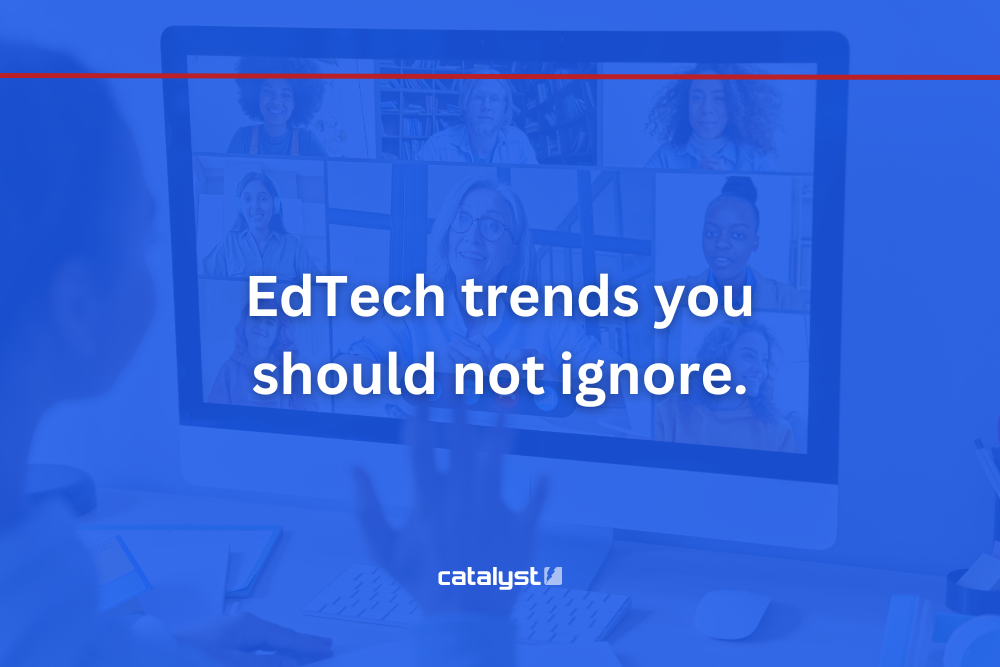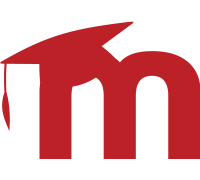EdTech (e-learning) Trends 2024 You Should Not Ignore.
Education providers and large organisations (who rely on ongoing employee training) face many challenges when it comes to e-learning. Last year, we summed up some of these in this blog.
Ever changing market demands and the need to adopt a new mix of technologies to respond, add to the list.
As each new year begins, education providers are hit with more data and articles on ‘the very latest’ trends and things they must consider.
Prioritising the steps in your organisation’s road map to success is becoming more and more difficult, so what do you do?
At the end of the day, the most important thing to remember is to focus on your end goal i.e. “keep your eyes on the prize”. Your end goal, regardless of expected lead time to achieve it, is your guiding star for decision making during the entire journey of your organisation’s digital transformation.
For many organisations we work with, for example, the ultimate long term goals are their student (and / or employee) engagement, success and retention; which, in the world of blended learning and hybrid working environments, require the right set of digital strategies and tools to achieve.
Let’s look at some of the not so new but continuing trends that your organisation should try and keep up with if the above goals resonate with you as well. We believe that these trends are here to stay and incorporating these in your plan will help you succeed in the face of current challenges in the e-learning business environment.
We’ll also look at some of the tools you can use to tackle these.
Hyper-personalised learning.
The old and well-known theory of ‘the customer is always right’ has now reached both the boardrooms and classrooms, with learner-centred education models offering more personalised teaching and assessments than ever. Being able to offer a more personalised experience for your learners (based on their individual abilities and progress) is a challenge for your instructors, administrators and IT professionals. However, if you succeed in implementing this approach, it will improve your learner’s engagement and retention.
In our blog “Moodle Analytics and reporting: things you should be measuring for student success” , we have covered some of the tools you can use to monitor and help improve your student engagement, progress and retention.
You may also consider developing a custom solution to monitor your student performance and to facilitate efficient exchange of information (relevant analytics data) between all parties responsible for your student success – advisors, instructors, EdTech specialists etc.
Blended learning.
Blended learning is also related to the hyper-personalised experiences we aim to deliver, although this one is more about how your students / employees prefer engage to with your course content: in the classroom (or the boardroom), remotely, on the move, or a combination of all the options available.
A very well managed blended learning approach is key, especially if your goal is to increase equity, accessibility and engagement. However, blended learning is something not many, if any, education providers have yet mastered as it is tricky to provide the same quality experiences in various environments (online and offline) simultaneously. Doing blended learning well can be a great competitive advantage.
Does your learning management system offer an opportunity for learners to interact with each other and to receive instant feedback? Do your systems support mobile learning?
Ask your e-learning consultants / LMS providers what plugins or integrations are available within your LMS platform to increase your student engagement levels and to support blended learning environment.
Moodle App awarded Education App of the Year at Australian Access Awards 2023!
Micro-learning | Micro-credentialing.
Breaking your learning content into bite-sized pieces has proven to be an effective strategy for better learner engagement. Lower attention spans, greater choice of courses, the demand for greater personalisation, as well as the trend towards self-directed and continuous learning, have made micro-learning and micro-credentialing an essential element of an education providers’ success strategy.
In our blog ‘Micro-credentialing is here to stay!’ we have covered some of the reasons why micro-credentialing is an excellent solution for both education providers and consumers.
In short, smaller units:
- are generally easier to roll out and manage,
- provide an extra income stream,
- are more flexible and affordable way to upskill staff (for workplace learning), and
- can be used to customise training for students – a much needed option in the wold of self-directed and hyper-personalised learning.
Better data.
In order to become great at all of the above – more personalised support for learners to ensure engagement, success and retention – you must continue to work towards better data collection, analytics tools and processes in your organisation.
Observing before acting is important. Understanding where the opportunities lie e.g. how you can increase enrolments, improve student and staff retention rates and make the right decisions for your organisation’s success, rely on good data practices. Again, we recommend you check out this blog, and the recommended further readings at the end of it for useful tips around data collection and analysis.
Cloud infrastructure.
Having your learning management system hosted in secure, flexible and well-managed cloud infrastructure is key to reducing common cyber security risks, avoiding disruptions and reducing costs in the long run.
We recommend you check out the following resources for tips:
Is it time to review your cyber security? Checklist included. (Catalyst IT News – March 2023)
Are you paying enough attention to your AWS spend? A few tips on how you could save thousands.
Protect your enterprise Moodle with 24/7 support from Catalyst.
Your software provider goes down – what’s your plan?
Six reasons to feel secure with Catalyst Managed Service.
AI. AI. AI.
Can AI tools solve the challenges of blended and hyper-personalised learning needs of the education market? It is difficult to argue otherwise. AI tools are believed to bring many great benefits to the world of e-learning – building more engaging courses, accommodating individual needs, reducing the burden of repetitive tasks for teachers and more – but there are also many concerns about things that can go wrong, which we cannot predict due to the novelty of these tools.
We can only achieve success with emerging technologies if we remember to keep humans in the loop. Collaborate with your key stakeholders including your IT specialists early on in your strategy development and review. Look at your student (and employee) success being at the centre of what you do in the IT department; and engage with the relevant third party providers early on to avoid costly mistakes further down the track.
Further reading:
Future Focus: Top EdTech Trends to Watch Out For in 2024.
7 EdTech Trends that will be Cultivating Passion for Knowledge in 2024.
Emerging Trends in Educational Technology: What to expect in 2024.
5 Ways Microlearning Increases Employee Satisfaction and Knowledge Retention.


